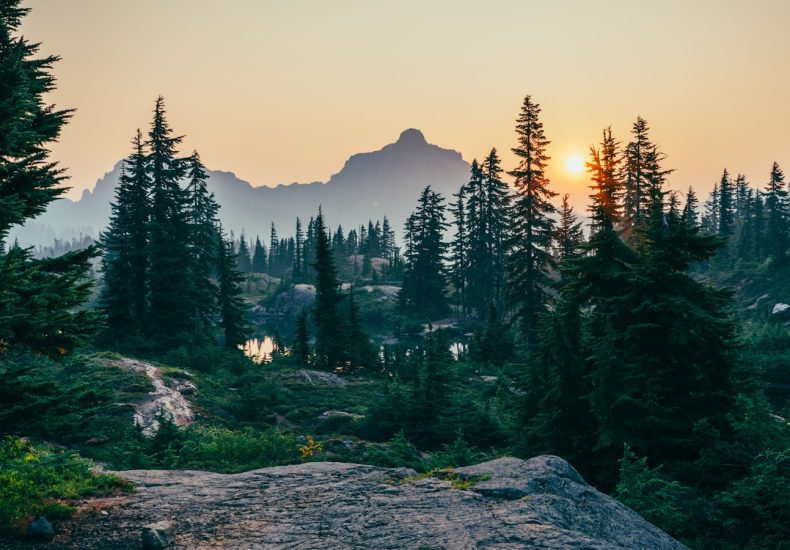
Why Protecting Forests Protects Our Future
Forests are far more than a collection of trees; they are living, breathing systems that regulate the planet’s climate, cleanse our air and water, and provide the raw materials for countless industries. When we talk about protecting forests, we’re really talking about safeguarding the very foundations of a healthy future for humanity. From the Amazon’s sprawling canopy to the temperate woodlands of Europe, each forest plays a unique role in maintaining ecological balance. Understanding why forest protection matters—and how it directly influences our future—empowers individuals, businesses, and governments to make decisions that benefit both the environment and the economy.
Climate Regulation: The Power of Carbon Sequestration
One of the most compelling reasons to protect forests is their ability to capture and store carbon dioxide—a process known as carbon sequestration. Trees absorb CO₂ during photosynthesis and lock it away in trunks, roots, and soil for decades, if not centuries. When forests are cut down or burned, that stored carbon is released back into the atmosphere, accelerating global warming.
Key Climate Benefits
- Reduced greenhouse‑gas emissions: Intact forests act as a natural carbon sink, offsetting up to 30% of human‑made emissions.
- Temperature moderation: Forests influence local and regional climates by regulating temperature and humidity.
- Resilience to extreme weather: Healthy forest ecosystems can buffer the impacts of storms, floods, and droughts.
Biodiversity: A Library of Life
Forests are home to more than 80% of the world’s terrestrial species. From the tiny leaf‑cutter ant to the majestic tiger, each organism contributes to a complex web of life that supports ecosystem stability. When we protect forests, we preserve this biodiversity, which in turn fuels medical discoveries, agricultural innovation, and cultural heritage.
Why Biodiversity Matters
- Genetic resources: Many of the world’s most important crops and medicines originate from forest species.
- Ecosystem services: Diverse habitats ensure pollination, pest control, and nutrient cycling.
- Adaptation potential: A rich gene pool gives species the flexibility to adapt to changing climate conditions.
Clean Water and Soil Health
Forests act as natural water towers. Their roots capture rainwater, slowly releasing it into rivers and aquifers, which provides a steady supply of clean water for downstream communities. Additionally, forest floor litter filters pollutants and prevents soil erosion, protecting both agricultural lands and urban water supplies.
Benefits for Human Populations
- Drinking water security: Over 2.5 billion people rely on forest‑regulated watersheds.
- Reduced flood risk: Tree canopies and root systems absorb excess rainfall, lowering flood peaks.
- Soil fertility: Decomposing leaf litter enriches soil with organic matter, supporting sustainable agriculture.
Economic Value: From Timber to Tourism
While deforestation is often driven by short‑term profit motives, the long‑term economic benefits of forest conservation far outweigh the immediate gains from logging. Sustainable forest management provides timber, non‑timber forest products (NTFPs), and ecotourism opportunities that generate steady income while preserving ecosystem health.
Examples of Sustainable Revenue Streams
- Certified timber: Brands that source from responsibly managed forests meet consumer demand for eco‑friendly products.
- Non‑timber products: Nuts, fruits, resins, and medicinal herbs offer diversified income for local communities.
- Ecotourism: Protected forests attract travelers seeking wildlife encounters, creating jobs in guiding, hospitality, and conservation.
Social and Cultural Importance
For many Indigenous peoples and local communities, forests are not just a resource—they are a cultural identity, a spiritual sanctuary, and a source of traditional knowledge. Protecting forests respects these cultural ties and upholds the rights of those who have stewarded these lands for generations.
Key Social Benefits
- Food security: Forests provide wild foods and medicinal plants essential for nutrition and health.
- Livelihoods: Sustainable forest enterprises create jobs and reduce poverty.
- Human rights: Recognizing land tenure and forest rights empowers Indigenous communities and reduces conflict.
How Deforestation Undermines Our Future
Every year, roughly 10 million hectares of forest disappear—roughly the size of Iceland. This loss triggers a cascade of negative effects: increased carbon emissions, loss of species, disrupted water cycles, and heightened vulnerability to natural disasters. The cumulative impact threatens the United Nations Sustainable Development Goals (SDGs) and jeopardizes the health and prosperity of future generations.
Practical Steps to Support Forest Protection
Protecting forests is a collective effort that starts with informed choices. Below are actionable steps individuals, businesses, and policymakers can take today.
For Individuals
- Choose products with certified sustainable timber (e.g., FSC or PEFC labels).
- Reduce paper consumption and support digital alternatives.
- Donate to or volunteer with reputable forest‑conservation NGOs.
- Plant native trees in community spaces or personal gardens.
For Businesses
- Adopt a zero‑deforestation supply chain policy.
- Invest in reforestation and afforestation projects that generate carbon credits.
- Report forest‑related impacts transparently in sustainability disclosures.
- Partner with local communities to develop sustainable forest‑based enterprises.
For Policymakers
- Enforce and strengthen anti‑deforestation legislation.
- Provide incentives for community‑managed forests and sustainable land‑use practices.
- Integrate forest conservation into national climate‑action plans.
- Support research and monitoring technologies that track forest health.
Future Outlook: The Ripple Effect of Forest Conservation
When forests thrive, the benefits ripple outward—cleaner air, stable climates, thriving economies, and resilient societies. By investing in forest protection now, we lay the groundwork for a future where humanity lives in harmony with nature rather than at its expense. The science is clear: safeguarding forests is one of the most cost‑effective strategies we have to mitigate climate change, preserve biodiversity, and secure essential resources for generations to come.
Take Action Today
Every decision you make can either contribute to forest loss or help preserve these vital ecosystems. Join the global movement to protect forests and secure a healthier future for all.
- Sign petitions demanding stronger forest‑protection laws.
- Support organizations like the World Wildlife Fund, Rainforest Alliance, or local forest trusts.
- Share this article on social media to raise awareness.



